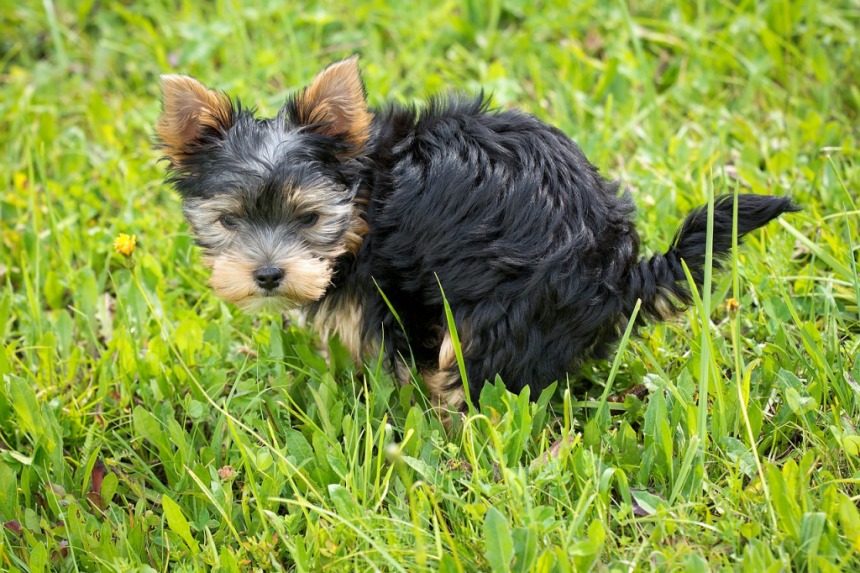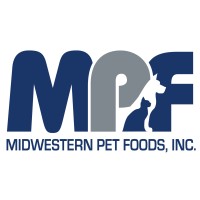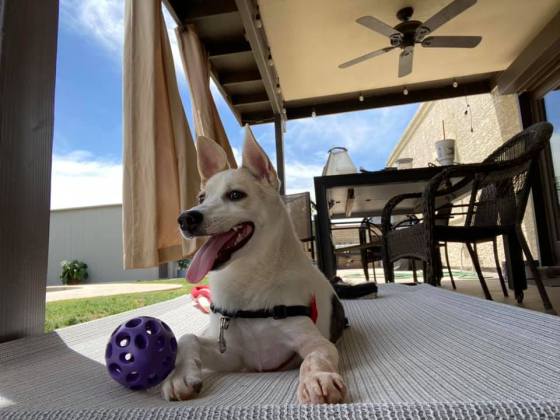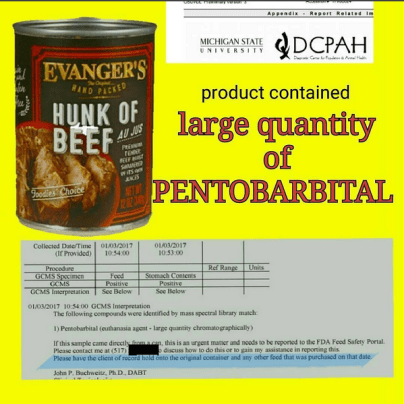
(Note: We’ve been trying to publish this post since February. But with the constant barrage of recalls, it’s been almost impossible to stay up-to-date with all the information.)
The last few months have been nothing short of frightening when it comes to recalls and our beloved pets. Unfortunately, we’ve all become a bit immune to seeing recall announcements here and there. But as the few months have clearly shown, recalls are on the rise particularly with the bacterial contamination of Salmonella which can infect dogs, cats and humans.
Recent recalls include products made by:
- J.M. Smucker Company: Gravy Train, Kibbles ‘N Bits, Ol’ Roy & Skippy
- Northwest Naturals
- Vital Essentials
- TruPet
- Smokehouse Pet Products
- Redbarn Pet Products
- Raws for Paws
- Darwin’s Natural Pet Products
- Blue Ridge Beef
- J.M. Smucker Company: Milo’s Kitchen Dog Treats
- Blue Buffalo Company
- Radagast Pet Food
- Steve’s Real Food
- Raw Basics
- An Update on the Deadly Chinese Jerky Treats
Keep reading to learn more about each recall.

J.M. Smucker (Dogs & Cats)
In early February, traces of pentobarbital (a drug used to euthanize cats, dogs and horses) were found in Gravy Train canned dog food. The findings came out of an ABC station’s investigation (WJLA in Washington, DC). The investigation found pentobarbital in 9 out of 15 cans (or 60%) of Gravy Train dog food. Over months of testing and re-testing, WJLA News tested a total of 62 samples of dog food.
Sourcing meat for pet food from a “diseased animal or an animal that has died otherwise than by slaughter” is a direct violation of federal law (Section 342(a)).
The Smucker Company (Orrvile, OH) later expanded the recall to include certain lots of Gravy Train, Kibbles ‘N Bits, Ol’ Roy and Skippy wet dog food products.
Click here to learn more about the original recall and the affected SKUs/UPC codes.
(UPDATE: A day after the story broke on February 8th, a class action lawsuit was filed against Big Heart Brands Gravy Train for advertising, misrepresenting and selling contaminated dog foods.)
(NOTE: J.M. Smucker also recalled certain lots of canned cat food in January. Click here to learn more about this limited voluntary recall.)

Northwest Naturals
Near the end of February, Northwest Naturals of Portland Oregon, issued a recall for its 5lb frozen Chicken and Salmon pet food chubs (sealed plastic tubes) due to potential Listeria monocytogenes contamination.
While no pet or human illnesses were reported, Listeria monocytogenes poses a risk to both animals ingesting the affected product and humans if they do not thoroughly wash their hands after coming into contact with a contaminated product.
Click here to learn more about this recall.
Vital Essentials
 Again at the end of February, Carnivore Meat Company of Green Bay, WI, recalled 73 cases of Vital Essentials Freeze-Dried Beef Nibblets Entree for Dogs pet food due to potential Salmonella contamination.
Again at the end of February, Carnivore Meat Company of Green Bay, WI, recalled 73 cases of Vital Essentials Freeze-Dried Beef Nibblets Entree for Dogs pet food due to potential Salmonella contamination.
The affected product was distributed through both independent and online retailers, Chewys.com and Amazon.com. Salmonella can infect both dogs, cats and humans. The contamination was found following the Michigan Department of Agriculture’s collection of a single batch, retail sample that tested positive. There have been no reports of illness.
Click here to learn more about the Vital Essentials recall.

TruPet
Another recall during the last week of February included a limited recall from TruPet of Milford, OH, for their “Treat Me Crunchy Beef Delight” 2.5 oz pet treats due to possible Salmonella contamination.
Click here to learn more about the TruPet/TruDog treat recall.
Smokehouse Pet Products

On February 19th, the FDA announced a recall of Beefy Munchies dog treats by Smokehouse Pet Products of Sun Valley, CA. The recall included all sizes and package types (including individual bags, resealable bags and plastic tubs (labeled “Beefy Bites”) due to possible Salmonella contamination.
The recall was issued after routine sampling and testing by the Colorado Department of Agriculture revealed Salmonella in two 4-oz packages.
Click here to read more about the Smokehouse Pet Products Beefy Munchies recall.
 Redbarn Pet Products
Redbarn Pet Products
In early March, Redbarn Pet Products of Long Beach, CA, expanded its original recall (of February 9th) to include all lots of their Bully Sticks under the brand names of Chewy Louie, Dentley’s and Good Lovin’.
The presence of Salmonella was revealed through testing by the Colorado Department of Agriculture. The investigation led to a raw ingredient from a single supplier as the source. The affected products were distributed in pet speciality and grocery retail stores nationwide.
Click here to learn more about the recall and click here to view all 25 recalled products and their images.
Raws for Paws
 In early February, approximately 4,000 pounds of Ground Turkey Pet food were recalled by Raws for Paws of Minneapolis, MN because of the potential presence of Salmonella.
In early February, approximately 4,000 pounds of Ground Turkey Pet food were recalled by Raws for Paws of Minneapolis, MN because of the potential presence of Salmonella.
Both the 1- and 5-pound chubs (sealed plastic tubes) were including in the recall. The affected product was distributed throughout Minnesota, Wisconsin, Iowa and through online mail orders.
Two illnesses were reported in connection with this recall. The recall was issued after testing by the Minnesota Department of Agriculture returned positive results.
Click here to learn more about the Raws for Paws recall of Ground Turkey Pet Food.
 Darwin’s Natural Pet Products
Darwin’s Natural Pet Products
Another early February recall involved two Darwin’s Pet Food products (of Tukwila WA):
- ZooLogics Chicken Meals with Organic Vegetables for Dogs; and
- ZooLogics Turkey with Organic Vegetables Meals for Dogs.
Testing revealed the presence of Salmonella. According to Gary Tashjian, the Founder of Darwin’s Pet Products, customers who received these meals were notified directly. Darwin’s Natural Pet Products are sold exclusively through a subscription service directly to their customers.

Just a few days ago, the recall was expanded to include a total of four lots of products. The following products were also added to the recall with the potential of Salmonella and E. Coli (0128):
- Natural Selections Chicken with Organic Vegetables Meals for Dogs; and
- Natural Selections Duck with Organic Vegetables Meals for Dogs.
Click here to learn more about the expanded recall of Darwin’s Pet Food products.
Blue Ridge Beef (Dogs & Kittens)
 Again, just a few days ago, another recall was issued, this time for Blue Ridge Beef (BRB) of Eatonton, GA. The recall involves one lot of its BRB Complete Raw pet food because of the potential presence of both Salmonella and Listeria monocytogenes. The affected product is sold in 2-pound chubs (sealed plastic tubes) and are frozen. The recall only affects the following states:
Again, just a few days ago, another recall was issued, this time for Blue Ridge Beef (BRB) of Eatonton, GA. The recall involves one lot of its BRB Complete Raw pet food because of the potential presence of both Salmonella and Listeria monocytogenes. The affected product is sold in 2-pound chubs (sealed plastic tubes) and are frozen. The recall only affects the following states:
- Florida
- Georgia
- North and South Carolina
- Tennessee
The contamination was revealed after samples were collected and tested by the FDA.
To learn more about the Blue Ridge Beef recall, click here.
NOTE: On March 2nd, Blue Ridge Beef also issued a recall for one lot of their Kitten Grind Raw Pet Food again for the potential contamination of both Salmonella and Listeria monocytogenes. Click here to learn more about this recall.
J.M. Smucker Company (Milo’s Kitchen Dog Treats)
 Just a few days again, the J.M. Smucker Company issued another recall for two specific lots of Milo’s Kitchen dog treats. The treats potentially contain elevated levels of beef thyroid hormone. Dogs ingesting elevated levels of beef thyroid hormone may exhibit symptoms like increased thirst and urination, weight loss, increased heart rate and restlessness. While these symptoms may resolve themselves once the affected product is no longer fed, prolonged consumption can result in serious vomiting, diarrhea and rapid and/or labored breathing.
Just a few days again, the J.M. Smucker Company issued another recall for two specific lots of Milo’s Kitchen dog treats. The treats potentially contain elevated levels of beef thyroid hormone. Dogs ingesting elevated levels of beef thyroid hormone may exhibit symptoms like increased thirst and urination, weight loss, increased heart rate and restlessness. While these symptoms may resolve themselves once the affected product is no longer fed, prolonged consumption can result in serious vomiting, diarrhea and rapid and/or labored breathing.
Click here to learn more about the recall and the affected UPC codes.
Blue Buffalo Company

Earlier this month, Blue Buffalo (Wilton, CT) issued a recall of one lot of its BLUE Wilderness Rocky Mountain Recipe Red Meat Dinner Wet Food for Adult Dogs because of the possibility of elevated levels of beef thyroid hormones.
Dogs ingesting elevated levels of beef thyroid hormone may exhibit symptoms like increased thirst and urination, weight loss, increased heart rate and restlessness. While these symptoms may resolve themselves once the affected product is no longer fed, prolonged consumption can result in serious vomiting, diarrhea and rapid and/or labored breathing.
NOTE: Blue Buffalo Pet Food was recently purchased by General Mills (the makers of Cheerios, Haagen-Dazs, Betty Crocker, Pillsbury and Old El Paso.
Click here to read more about the Blue Buffalo recall.
.png?resize=222%2C174) Radagast Pet Food (Cats)
Radagast Pet Food (Cats)
UPDATE: Radagast Pet is expanding their original recall to all varieties of Rad Cat Raw Diet due to potential listeria contamination.
Click here to learn more about the latest, expanded recall and the affected lot numbers.
The Portland, OR company, Radagast Pet Food, Inc., is recalling two lots of their products as of March 20th due to the potential of Listeria monocytogenes contamination.
The two recipes being recalled include:
- Rad Cat Raw Diet Free-Range Chicken; and
- Rad Cat Raw Diet Free-Range Turkey.
Listeria monocytogenes poses a risk to both animals ingesting the affected product and humans if they do not thoroughly wash their hands after coming into contact with a contaminated product.
Click here to learn more about the Radagast Cat Food recall and the two lots affected.

Steve’s Real Food
Earlier this month, Steve’s Real Food (Cottonwood, UT) issued a recall for its Raw Frozen Dog Food Turkey Canine Recipe after testing positive for Salmonella.
The affected lot (52 cases) involved their frozen 5-pound bags of turkey nuggets. They were distributed to retail pet food stores in the following states:
- California
- Colorado
- Connecticut
- Iowa
- Kansas
- Florida
- Maryland
- Michigan
- Minnesota
- Missouri
- North Dakota
- Nebraska
- New Jersey
- Nevada
- New York
- Oregon
- Pennsylvania
- Texas
- Utah
- Virginia
- Washington
To learn more about the Steve’s Real Food recall, click here.
Raw Basics

Another frozen raw pet food issued a recall on March 6th. Raw Basics of Pleasant Prairie, WI, recalled its 5-pound boxes of Tucker’s Raw Frozen Pork-Bison Dog Food for potential Salmonella contamination.
The presence of Salmonella was revealed after testing done by the Nebraska Department of Agriculture. The contamination was isolated to one lot of 108 boxes (540 pounds) and distributed to pet specialty retail stores in Minnesota, Georgia, Kansas and Pennsylvania.
Click here to learn more about the Raw Basics recall.
An Update on the Deadly Chinese Jerky Treats
It’s happened again, this time in Oklahoma with a 4-year-old Yorkie.
Within hours of eating of chicken jerky dog treats with “all natural farm fresh ingredients” sourced from China, Zoe was dead.
It’s been over 11 years since imported food and treats from China have been harming – and even killing – our pets. Yet the treats still sit on store shelves for unsuspecting customers to buy and feed to their pets.
If you thought someone is looking out and protecting both you and your beloved pets, think again. If you’re looking for obvious information and disclosures about the treats you buy, think again too.
Read ALL the print, especially the tiny print buried on the back of the package (as illustrated below with the treats that killed Zoe, sold at Walmart).

With no answers from the FDA’s years-long investigative research, but with pets still being sickened and dying, become your own best advocate and learn all you can about what you feed your pet. Until safety takes precedent over profits, your pet’s health is in potential danger.
Click here to read more about unsafe Chinese jerky treats.
Click here to read Zoe’s story.
 We try our best to keep our readers informed with the latest recall information (here on our blog and on our Twitter/Facebook pages); unfortunately that’s not always possible. To stay informed with the latest recalls, subscribe to one (we recommend all) of the recall alerts below.
We try our best to keep our readers informed with the latest recall information (here on our blog and on our Twitter/Facebook pages); unfortunately that’s not always possible. To stay informed with the latest recalls, subscribe to one (we recommend all) of the recall alerts below.
Your pet is counting on you.
Dog Food Advisor
Truth About Pet Food
American Veterinary Medical Foundation (AVMA)
US Food & Drug Administration (FDA)































 Diarrhea is an inconvenient, smelly, sleep-depriving condition resulting from abnormal gastrointestinal (GI) function. Poop comes in a variety of consistencies and colors. A scoring chart, like the Bristol Stool Chart pictured here, presents seven categories of stool, helping standardize parameters for consistency.
Diarrhea is an inconvenient, smelly, sleep-depriving condition resulting from abnormal gastrointestinal (GI) function. Poop comes in a variety of consistencies and colors. A scoring chart, like the Bristol Stool Chart pictured here, presents seven categories of stool, helping standardize parameters for consistency. The role of the intestines is to break down food and absorb small nutrients, while the colon absorbs water and leaves behind excrement we call “poop.”
The role of the intestines is to break down food and absorb small nutrients, while the colon absorbs water and leaves behind excrement we call “poop.”

 important role in overall health, it is best not to treat diarrhea the traditional way using antibiotics such as Metronidazole unless it is absolutely necessary. (6) While antibiotics may be effective at treating diarrhea, they are also indiscriminate killers of bacteria and wreak havoc on the important bacteria of the microbiome.
important role in overall health, it is best not to treat diarrhea the traditional way using antibiotics such as Metronidazole unless it is absolutely necessary. (6) While antibiotics may be effective at treating diarrhea, they are also indiscriminate killers of bacteria and wreak havoc on the important bacteria of the microbiome. first milk produced by mammals immediately after giving birth. It is a nutrient-rich fluid that contains immune, growth, and tissue repair factors. Colostrum contains a significant number of complementary components that act as natural anti-microbial agents to actively stimulate the maturation and repair of the immune system and “leaky gut.” (5)
first milk produced by mammals immediately after giving birth. It is a nutrient-rich fluid that contains immune, growth, and tissue repair factors. Colostrum contains a significant number of complementary components that act as natural anti-microbial agents to actively stimulate the maturation and repair of the immune system and “leaky gut.” (5) Dr. Khodakhah works as a small animal relief veterinarian. Following her passion to help wildlife, stray animals, and owners in need, she directs international veterinary spay/neuter programs and works with the Wolf Conservation Center (NY). She leverages her entrepreneurial spirit and experience to drive meaningful change in the veterinary profession, becoming a Certified Professional Coach to help arm young doctors with the tools they needed to succeed. With a similar mission, she produces a podcast, Time to PAWS, which features common experiences in vet med, promoting opportunities, leaning into fear, while building strategies for resilience. She is an Advisory Board Member of several organizations and enjoys spending time with her family, traveling, good food, and scuba diving.
Dr. Khodakhah works as a small animal relief veterinarian. Following her passion to help wildlife, stray animals, and owners in need, she directs international veterinary spay/neuter programs and works with the Wolf Conservation Center (NY). She leverages her entrepreneurial spirit and experience to drive meaningful change in the veterinary profession, becoming a Certified Professional Coach to help arm young doctors with the tools they needed to succeed. With a similar mission, she produces a podcast, Time to PAWS, which features common experiences in vet med, promoting opportunities, leaning into fear, while building strategies for resilience. She is an Advisory Board Member of several organizations and enjoys spending time with her family, traveling, good food, and scuba diving.










 staple in most households with dogs. So much so that in just 2019,
staple in most households with dogs. So much so that in just 2019, 

 While it may seem you are feeding your dog nutritious and healthy dog food from the commercials and labels, the excessive processing – more accurately, overcooking – has very negative effects on the actual nutrition your dog is – or isn’t – getting which can lead to serious, even life-threatening health issues over an extended period.
While it may seem you are feeding your dog nutritious and healthy dog food from the commercials and labels, the excessive processing – more accurately, overcooking – has very negative effects on the actual nutrition your dog is – or isn’t – getting which can lead to serious, even life-threatening health issues over an extended period.







 relationship and bond! Below are some great ideas to keep you and your dog active even as you shelter-in-place.
relationship and bond! Below are some great ideas to keep you and your dog active even as you shelter-in-place.




 First, you’ll need a clean urine sample; ask your vet for a collection container.
First, you’ll need a clean urine sample; ask your vet for a collection container.
 Pamela Morrison is a professional copywriter for the pet industry including marketers, pet product and service providers, veterinarians and holistic pet practitioners. She does home visits for a local rescue when she can and has been a dog foster mom. She lives in western Michigan with her husband and two dogs, Lacey and Zadie. Pam enjoys walking her dogs, reading, and drinking lots of coffee!
Pamela Morrison is a professional copywriter for the pet industry including marketers, pet product and service providers, veterinarians and holistic pet practitioners. She does home visits for a local rescue when she can and has been a dog foster mom. She lives in western Michigan with her husband and two dogs, Lacey and Zadie. Pam enjoys walking her dogs, reading, and drinking lots of coffee!








 even after passing through the gut.
even after passing through the gut.







 Meet our Guest Blogger
Meet our Guest Blogger





 inevitable furballs rolling across the floor like tumbleweeds. “Double-coated dogs shed a lot during hotter months because they’re letting their undercoat out <blowing coat>,” further advises Humberto. “When you do a de-shedding brush out it’s fine because you’re taking only the undercoat out and leaving what is called the guard coat – a layer to prevent sunburn.”
inevitable furballs rolling across the floor like tumbleweeds. “Double-coated dogs shed a lot during hotter months because they’re letting their undercoat out <blowing coat>,” further advises Humberto. “When you do a de-shedding brush out it’s fine because you’re taking only the undercoat out and leaving what is called the guard coat – a layer to prevent sunburn.” r about what’s best for your pup. Hair-bearing dogs like Poodles, Shih Tzus and Yorkies, need haircuts regularly and can typically be shaved if needed. But fur-bearing, double-coated dogs, such as Alaskan Malamutes, Labs and Golden Retrievers have fur that grows to a particular length and should NOT be shaved.* You can find a complete list of breeds and coat types at
r about what’s best for your pup. Hair-bearing dogs like Poodles, Shih Tzus and Yorkies, need haircuts regularly and can typically be shaved if needed. But fur-bearing, double-coated dogs, such as Alaskan Malamutes, Labs and Golden Retrievers have fur that grows to a particular length and should NOT be shaved.* You can find a complete list of breeds and coat types at 

 individual chubs (plastic pouches) to identify them as the recalled products. Lot codes are only printed on the outside of the cases.
individual chubs (plastic pouches) to identify them as the recalled products. Lot codes are only printed on the outside of the cases.











 companion usually without side effects.
companion usually without side effects.






















 distracted. In the beginning, limit the training to just you and the members of the household. Consistently practice the acceptable behavior with every single person (adults and children), every single time anyone walks in. Remember, it takes 100% consistency for a dog to learn something new, so be patient and stick with it. If you give up, he will quickly go back to his old habits and be even more confused about what you really want.
distracted. In the beginning, limit the training to just you and the members of the household. Consistently practice the acceptable behavior with every single person (adults and children), every single time anyone walks in. Remember, it takes 100% consistency for a dog to learn something new, so be patient and stick with it. If you give up, he will quickly go back to his old habits and be even more confused about what you really want.


 On April 13th, K9 Natural Ltd of New Zealand voluntarily recalled four batches of its K9 Natural Frozen Chicken Feast (the 2.2 and 11lb bags) that were imported to the United States in June 2017. The recall was issued due to potential
On April 13th, K9 Natural Ltd of New Zealand voluntarily recalled four batches of its K9 Natural Frozen Chicken Feast (the 2.2 and 11lb bags) that were imported to the United States in June 2017. The recall was issued due to potential  For the third time, another recall was issued on two Vital Essentials products: Vital Essentials Freeze-Dried Beef Toppers and Vital Essentials Frozen Beef Chub Entree for Dogs due to potential
For the third time, another recall was issued on two Vital Essentials products: Vital Essentials Freeze-Dried Beef Toppers and Vital Essentials Frozen Beef Chub Entree for Dogs due to potential 

 We try our best to keep our readers informed with the latest recall information (here on our blog and on our Twitter/Facebook pages); unfortunately that’s not always possible. To stay informed with the latest recalls, subscribe to one (we recommend all) of the recall alerts below.
We try our best to keep our readers informed with the latest recall information (here on our blog and on our Twitter/Facebook pages); unfortunately that’s not always possible. To stay informed with the latest recalls, subscribe to one (we recommend all) of the recall alerts below.

 Again at the end of February, Carnivore Meat Company of Green Bay, WI, recalled 73 cases of Vital Essentials Freeze-Dried Beef Nibblets Entree for Dogs pet food due to potential
Again at the end of February, Carnivore Meat Company of Green Bay, WI, recalled 73 cases of Vital Essentials Freeze-Dried Beef Nibblets Entree for Dogs pet food due to potential 

 Redbarn Pet Products
Redbarn Pet Products
 Darwin’s Natural Pet Products
Darwin’s Natural Pet Products
 Again, just a few days ago, another recall was issued, this time for Blue Ridge Beef (BRB) of Eatonton, GA. The recall involves one lot of its BRB Complete Raw pet food because of the potential presence of both
Again, just a few days ago, another recall was issued, this time for Blue Ridge Beef (BRB) of Eatonton, GA. The recall involves one lot of its BRB Complete Raw pet food because of the potential presence of both  Just a few days again, the J.M. Smucker Company issued another recall for two sp
Just a few days again, the J.M. Smucker Company issued another recall for two sp
.png?resize=222%2C174) Radagast Pet Food (Cats)
Radagast Pet Food (Cats)








 Antifreeze is a Sweet Menace
Antifreeze is a Sweet Menace Mushrooms Pose a Natural Toxin
Mushrooms Pose a Natural Toxin Snakes … oh my!
Snakes … oh my! Heat-Seeking Rodents
Heat-Seeking Rodents 









 ;
;
















 Blue Ridge Beef has issued another voluntary recall; this time for one of its raw, frozen turkey products due to possible contamination with Listeria monocytogenes.
Blue Ridge Beef has issued another voluntary recall; this time for one of its raw, frozen turkey products due to possible contamination with Listeria monocytogenes. owners who do not thoroughly wash their hands (or surfaces) after coming into contact with the affected product. (Infected humans will have some – or all – of the following symptoms: nausea, vomiting, diarrhea or bloody diarrhea, abdominal cramping and fever. People exhibiting these symptoms should contact their healthcare provider.)
owners who do not thoroughly wash their hands (or surfaces) after coming into contact with the affected product. (Infected humans will have some – or all – of the following symptoms: nausea, vomiting, diarrhea or bloody diarrhea, abdominal cramping and fever. People exhibiting these symptoms should contact their healthcare provider.)















































